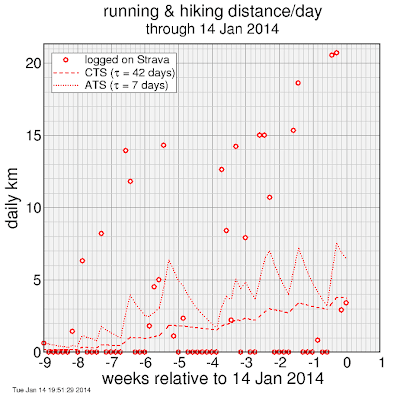adding dynamic damping to nonlinear least square fitting of modified Veloclinic power-duration model
Previously I used a damping factor δ for the nonlinear fitting of the modified Veloclinic power-duration model. This resulted in me fitting 28 out of 29 test cases when I set δ = 0.25. But δ = 0.25 is too small: it means at best 25% of the progress toward the solution is covered with each iteration. That's inefficient when homing in on the result. The real issue is when the solver isn't homing in on the result: when the solution is still substantially off and the solver it attempting to make a big leap toward the solution. The big leap could easily overshoot the desired solution, or be in a slightly wrong direction in the hyperdimensional parameter space. In such instances, it's better to take smaller steps toward the solution, to home in on the the "zone of quadratic convergence" where the targeting becomes easier. For that I introduced a dynamic weighting scheme multiplying the primary damping factor by a factor dependent on the step size of the parameters. ...
